-
 Bitcoin
Bitcoin $84,293.8118
2.92% -
 Ethereum
Ethereum $1,812.6156
1.61% -
 Tether USDt
Tether USDt $0.9995
-0.01% -
 XRP
XRP $2.1300
3.96% -
 BNB
BNB $598.0731
1.81% -
 Solana
Solana $122.5476
6.46% -
 USDC
USDC $0.9999
0.00% -
 Dogecoin
Dogecoin $0.1697
6.92% -
 Cardano
Cardano $0.6614
3.58% -
 TRON
TRON $0.2399
1.67% -
 UNUS SED LEO
UNUS SED LEO $9.4721
0.87% -
 Chainlink
Chainlink $12.9918
2.93% -
 Toncoin
Toncoin $3.3918
-5.15% -
 Stellar
Stellar $0.2593
0.64% -
 Avalanche
Avalanche $18.1424
0.54% -
 Sui
Sui $2.2723
2.26% -
 Shiba Inu
Shiba Inu $0.0...01227
0.72% -
 Hedera
Hedera $0.1657
3.27% -
 Litecoin
Litecoin $84.4108
2.68% -
 Polkadot
Polkadot $4.0452
0.41% -
 MANTRA
MANTRA $6.2735
-2.26% -
 Bitcoin Cash
Bitcoin Cash $299.8507
1.71% -
 Bitget Token
Bitget Token $4.5438
1.99% -
 Dai
Dai $1.0001
0.01% -
 Ethena USDe
Ethena USDe $0.9992
-0.03% -
 Hyperliquid
Hyperliquid $11.9337
5.81% -
 Monero
Monero $215.5583
2.77% -
 Uniswap
Uniswap $5.9113
3.01% -
 Pi
Pi $0.5297
-9.83% -
 NEAR Protocol
NEAR Protocol $2.4929
1.07%
Why does DeFi mining require users to participate in liquidity provision?
DeFi mining relies on liquidity provision to AMMs, rewarding users with tokens to ensure smooth DEX operations despite risks like impermanent loss.
Apr 02, 2025 at 02:21 am
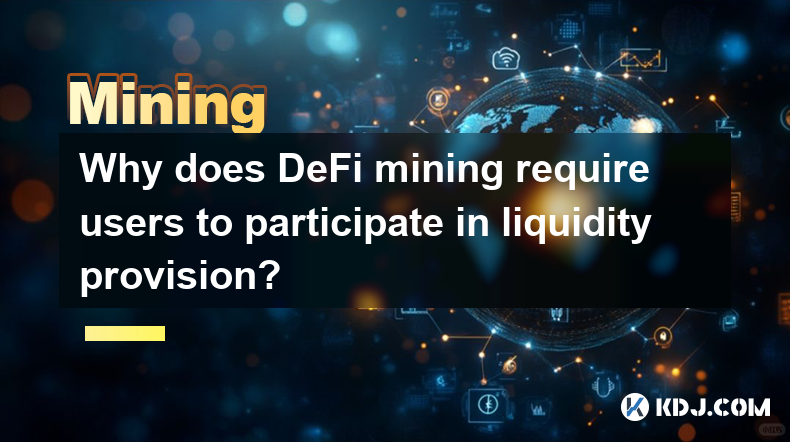
The Crucial Role of Liquidity Provision in DeFi Mining
Decentralized Finance (DeFi) mining, unlike traditional Bitcoin mining which relies on computational power, often necessitates user participation in liquidity provision. This is because many DeFi protocols utilize Automated Market Makers (AMMs) as the core of their decentralized exchanges (DEXs). These AMMs require sufficient liquidity to function effectively, allowing users to swap tokens seamlessly. Without adequate liquidity, slippage – the difference between the expected price and the actual execution price – becomes significant, hindering the platform's usability and potentially harming its overall health. Therefore, incentivizing liquidity provision is paramount.
DeFi mining rewards users for providing liquidity to these AMMs. This incentivizes participation and ensures the continued smooth operation of the DEX. The rewards, typically paid in the platform's native token or other cryptocurrencies, compensate users for the risks associated with liquidity provision, such as impermanent loss.
What exactly is impermanent loss? It's the potential loss incurred when the price of the assets provided to the liquidity pool changes relative to each other during the time the assets are locked. If the price ratio shifts significantly, you might end up with less value than if you had simply held the assets individually. Understanding this risk is critical before participating in DeFi liquidity provision.
How does providing liquidity actually work? It involves depositing an equal value of two tokens into a liquidity pool managed by an AMM. The ratio of these tokens is crucial for maintaining a balanced pool. The protocol then uses these tokens to facilitate trades between users. In return, liquidity providers (LPs) receive trading fees proportional to their share of the pool. These fees, along with potential yield farming rewards, are the primary compensation for the risk of impermanent loss.
Several popular DeFi protocols utilize this model, offering various incentives and risk profiles. Each protocol has its own nuances regarding the types of tokens accepted, the reward structure, and the specific risks involved. Researching the specifics of each platform is crucial before committing funds.
The process of providing liquidity typically involves the following steps:
- Selecting a DeFi platform: Research and choose a reputable platform with a clear understanding of its risks and rewards.
- Choosing a liquidity pool: Identify a pool with assets you're comfortable holding and understand the potential for impermanent loss.
- Approving the transaction: Authorize the smart contract to access your tokens.
- Depositing your assets: Provide an equal value of the two required tokens to the pool.
- Receiving LP tokens: Receive tokens representing your share in the liquidity pool. These tokens can be used to withdraw your assets at any time.
Understanding the mechanics of AMMs is vital for successful DeFi mining through liquidity provision. AMMs use algorithms to determine the price of assets based on the supply and demand within the pool. The most common algorithm is the constant product formula, where the product of the quantities of the two assets remains constant.
The implications of imbalanced liquidity pools are significant. If one token becomes significantly more valuable than the other, it can lead to arbitrage opportunities, where traders exploit the price difference for profit. This can further exacerbate the imbalance, potentially leading to instability in the pool and even impacting the overall functionality of the DEX. Therefore, maintaining a balanced pool is crucial.
The risk of smart contract vulnerabilities is also a significant factor. DeFi protocols are built on smart contracts, and vulnerabilities in these contracts can be exploited by malicious actors, leading to the loss of funds. Thorough audits and security measures are essential for mitigating these risks.
Furthermore, regulatory uncertainty remains a considerable concern within the DeFi space. Governments worldwide are still developing regulatory frameworks for cryptocurrencies and DeFi protocols. These regulations can significantly impact the operations and profitability of DeFi projects.
The attractiveness of DeFi mining through liquidity provision depends on various factors, including the yield offered, the risk of impermanent loss, and the overall stability of the platform. It's essential to carefully weigh these factors before making any investment decisions. Always conduct thorough research and understand the potential risks involved.
Frequently Asked Questions:
Q: What is impermanent loss?
A: Impermanent loss is the potential loss you may experience when providing liquidity to a DeFi pool if the price ratio of the assets you deposited changes significantly compared to holding them individually. It's "impermanent" because it only becomes a realized loss if you withdraw your assets from the pool.
Q: How are liquidity providers compensated?
A: Liquidity providers are compensated through trading fees generated within the pool, proportional to their share of the pool. Some protocols also offer additional incentives in the form of their native token or other cryptocurrencies.
Q: What are the risks of DeFi mining through liquidity provision?
A: The main risks include impermanent loss, smart contract vulnerabilities, and regulatory uncertainty. Additionally, the value of the assets in the pool can fluctuate, impacting the overall return on investment.
Q: How do I choose a DeFi platform for liquidity provision?
A: Choose a platform with a strong track record, transparent governance, regular audits, and a community-driven approach. Consider the reputation of the platform and the risks associated with the specific liquidity pools.
Q: What is an Automated Market Maker (AMM)?
A: An AMM is a type of decentralized exchange (DEX) that uses algorithms to determine asset prices based on supply and demand within a liquidity pool, eliminating the need for order books. They are central to many DeFi mining strategies.
Disclaimer:info@kdj.com
The information provided is not trading advice. kdj.com does not assume any responsibility for any investments made based on the information provided in this article. Cryptocurrencies are highly volatile and it is highly recommended that you invest with caution after thorough research!
If you believe that the content used on this website infringes your copyright, please contact us immediately (info@kdj.com) and we will delete it promptly.
- Justin Sun Accuses First Digital Trust of Insolvency, Triggering Severe Depeg of the FTUSD Stablecoin
- 2025-04-05 03:20:12
- The psychology of betting: how digital assets influence player behavior in 1win
- 2025-04-05 03:20:12
- Remittix Solves Real-World Problems and Provides an Actual Solution to Crypto Payments
- 2025-04-05 03:15:12
- The Crypto Market's 2025 Bull Run Is Here
- 2025-04-05 03:15:12
- If You're Hunting for the Best Meme Coin to Buy, Now's the Time to Look Beyond the Usual Suspects
- 2025-04-05 03:10:13
- PayPal Expands Crypto Services with Solana and Chainlink
- 2025-04-05 03:10:13
Related knowledge
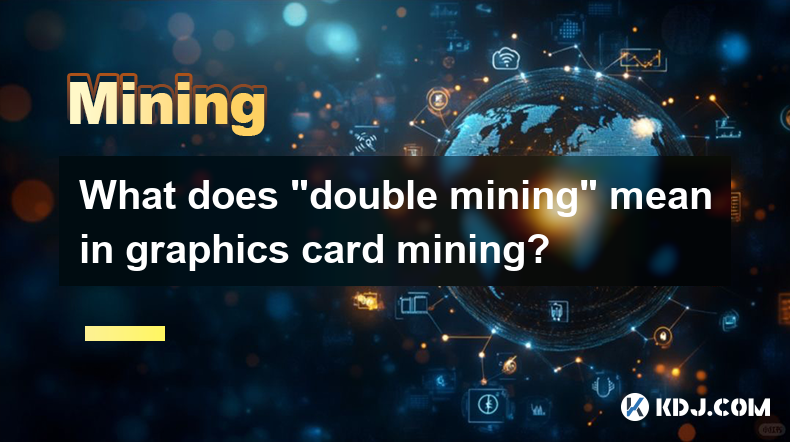
What does "double mining" mean in graphics card mining?
Apr 04,2025 at 08:35pm
In the world of cryptocurrency, the term 'double mining' refers to a specific technique used in graphics card mining to maximize the efficiency and profitability of mining operations. This method involves simultaneously mining two different cryptocurrencies using the same graphics card. The concept of double mining has gained popularity among miners who...
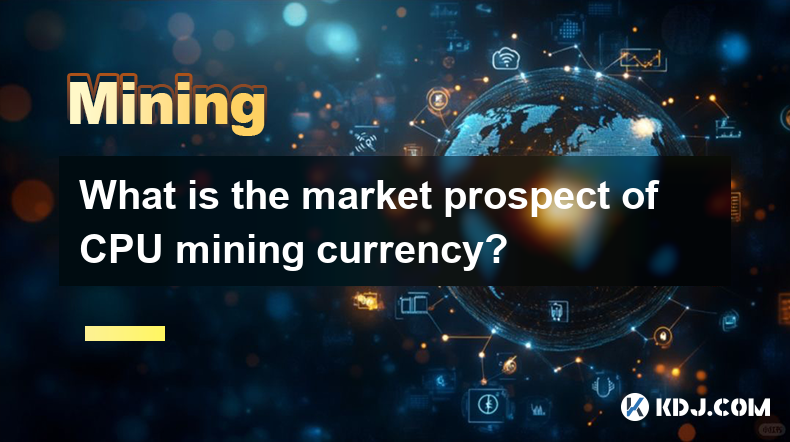
What is the market prospect of CPU mining currency?
Apr 04,2025 at 09:14am
The concept of CPU mining currency has gained traction in the cryptocurrency community due to its accessibility and potential for decentralization. Unlike GPU or ASIC mining, which often requires significant investment in specialized hardware, CPU mining can be performed using standard computer processors. This makes it an attractive option for individu...
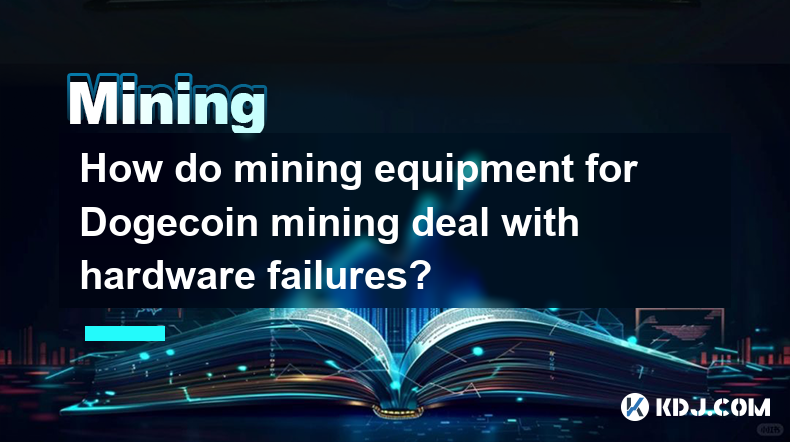
How do mining equipment for Dogecoin mining deal with hardware failures?
Apr 03,2025 at 09:15am
Dogecoin mining, like other forms of cryptocurrency mining, relies heavily on specialized hardware to perform the necessary computations to mine new coins. However, as with any technology, mining equipment can encounter hardware failures. This article will explore how mining equipment for Dogecoin mining deals with such failures, covering various aspect...
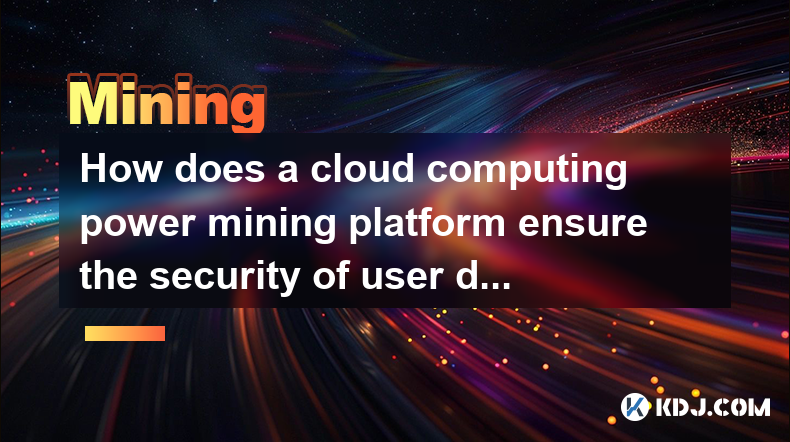
How does a cloud computing power mining platform ensure the security of user data?
Apr 04,2025 at 01:14am
In the realm of cryptocurrency, cloud computing power mining platforms have emerged as a popular solution for individuals and companies looking to mine digital assets without the need for expensive hardware. However, with the increasing use of these platforms, the security of user data has become a critical concern. This article delves into the various ...

How to tell if mining is still profitable?
Apr 03,2025 at 01:56pm
Determining whether cryptocurrency mining remains profitable involves assessing several key factors. Miners must consider the costs of electricity, the efficiency of their mining hardware, the current market price of the cryptocurrency being mined, and the mining difficulty. Electricity costs can vary significantly by location, and high costs can quickl...
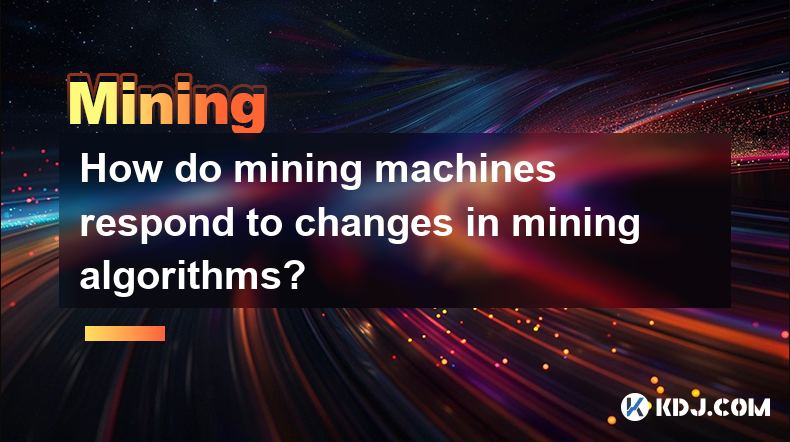
How do mining machines respond to changes in mining algorithms?
Apr 03,2025 at 07:07am
Mining machines are essential components of the cryptocurrency ecosystem, particularly for Proof of Work (PoW) blockchains like Bitcoin. These machines are designed to solve complex mathematical problems to validate transactions and add them to the blockchain. However, the algorithms that govern these mining processes can change, impacting the efficienc...

What does "double mining" mean in graphics card mining?
Apr 04,2025 at 08:35pm
In the world of cryptocurrency, the term 'double mining' refers to a specific technique used in graphics card mining to maximize the efficiency and profitability of mining operations. This method involves simultaneously mining two different cryptocurrencies using the same graphics card. The concept of double mining has gained popularity among miners who...

What is the market prospect of CPU mining currency?
Apr 04,2025 at 09:14am
The concept of CPU mining currency has gained traction in the cryptocurrency community due to its accessibility and potential for decentralization. Unlike GPU or ASIC mining, which often requires significant investment in specialized hardware, CPU mining can be performed using standard computer processors. This makes it an attractive option for individu...

How do mining equipment for Dogecoin mining deal with hardware failures?
Apr 03,2025 at 09:15am
Dogecoin mining, like other forms of cryptocurrency mining, relies heavily on specialized hardware to perform the necessary computations to mine new coins. However, as with any technology, mining equipment can encounter hardware failures. This article will explore how mining equipment for Dogecoin mining deals with such failures, covering various aspect...

How does a cloud computing power mining platform ensure the security of user data?
Apr 04,2025 at 01:14am
In the realm of cryptocurrency, cloud computing power mining platforms have emerged as a popular solution for individuals and companies looking to mine digital assets without the need for expensive hardware. However, with the increasing use of these platforms, the security of user data has become a critical concern. This article delves into the various ...

How to tell if mining is still profitable?
Apr 03,2025 at 01:56pm
Determining whether cryptocurrency mining remains profitable involves assessing several key factors. Miners must consider the costs of electricity, the efficiency of their mining hardware, the current market price of the cryptocurrency being mined, and the mining difficulty. Electricity costs can vary significantly by location, and high costs can quickl...

How do mining machines respond to changes in mining algorithms?
Apr 03,2025 at 07:07am
Mining machines are essential components of the cryptocurrency ecosystem, particularly for Proof of Work (PoW) blockchains like Bitcoin. These machines are designed to solve complex mathematical problems to validate transactions and add them to the blockchain. However, the algorithms that govern these mining processes can change, impacting the efficienc...
See all articles





















































































